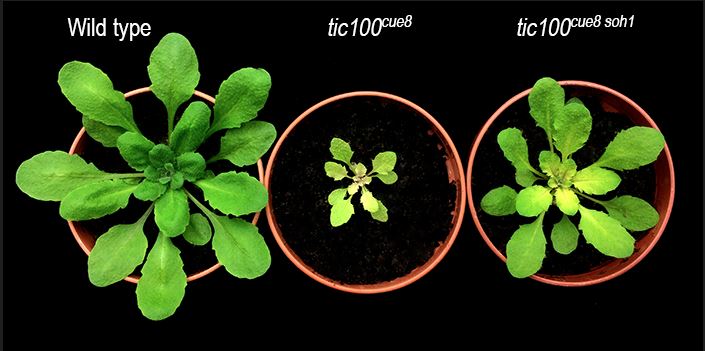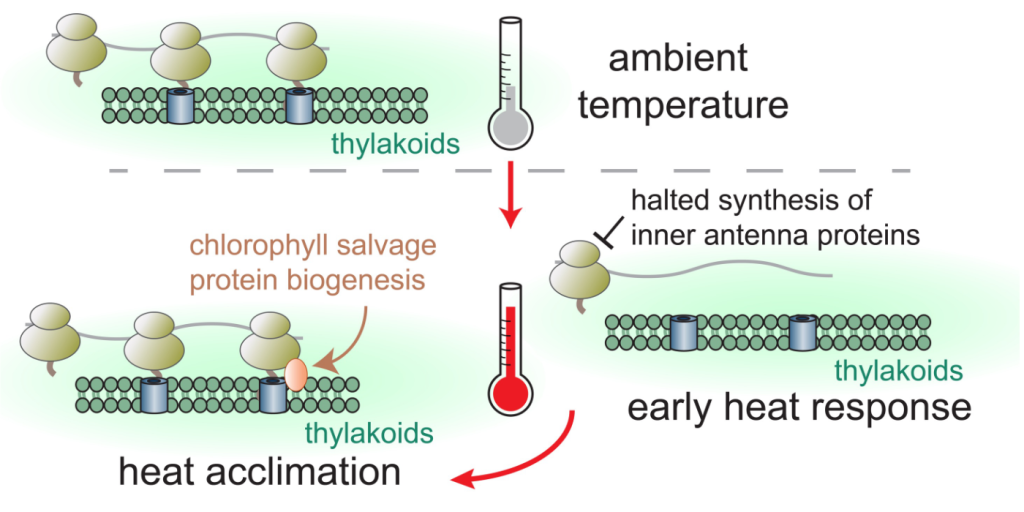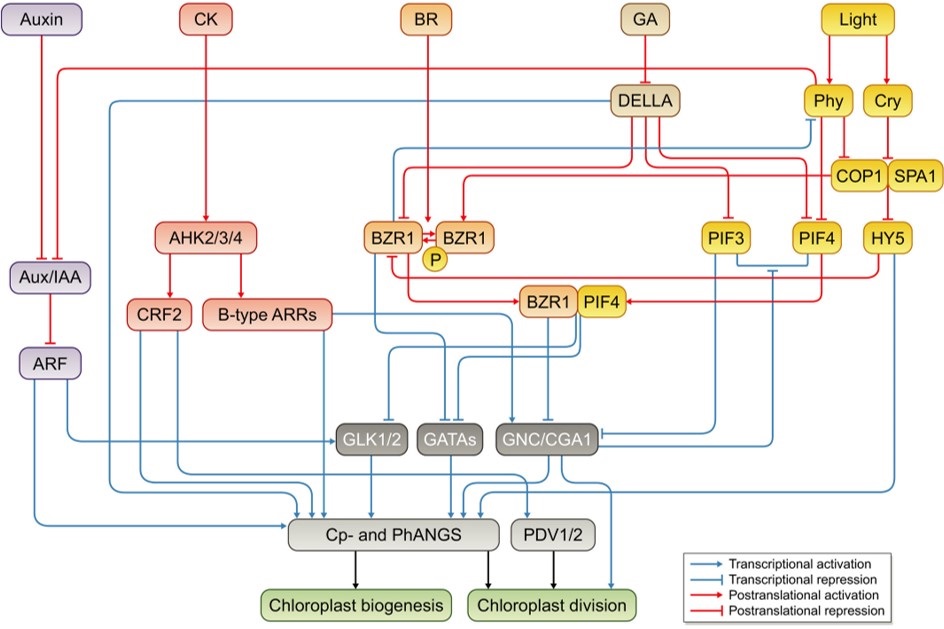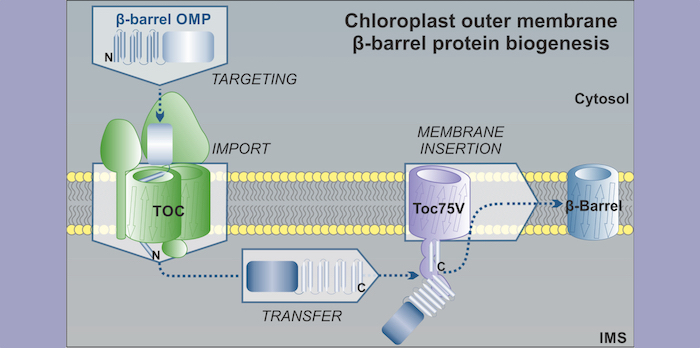
Chloroplasts: reporting at the door
The Plant Cell: In a NutshellLoudya et al. report that complementary mutations in TIC100 of the chloroplast inner envelope membrane can cause reductions or corrective improvements in chloroplast protein import, highlighting a role in signalling. Plant Cell https://doi.org/10.1093/plcell/koac153
By Naresh Loudya, Paul Jarvis and…

The chloroplast protein biogenesis network at the ribosome during heat acclimation
The Plant Cell: In a NutshellBy Raphael Tröscha, Fabian Riesb, Lisa Désirée Westrichb, Felix Willmundb, a Max Planck Institute of Molecular Plant Physiology, Am Mühlenberg 1, 14476 Potsdam-Golm, Germany; b Molecular Genetics of Eukaryotes, University of Kaiserslautern, Paul-Ehrlich-Str. 23, 67663 Kaiserslautern, Germany
Trösch,…

Chloroplast protein import determines plant proteostasis and retrograde signaling (bioRxiv)
Plant Science Research WeeklyThe neurological condition Huntington’s disease is caused by mutated versions of the Huntingtin gene that encode expanded stretches of polyglutamine repeats, resulting in protein aggregation. However, despite the widespread presence of polyglutamine repeat regions in plant proteomes, similar pathologies…

A synthetic switch based on orange carotenoid protein to control blue-green light responses in chloroplasts (Plant Physiol)
Plant Science Research WeeklySynthetic biology aims to engineer and redesign components of natural organisms for useful purposes. One of the most prolific areas of synthetic biology is based on the engineering of photoreactive proteins with signaling potential, such as photoreceptors. Natural photoreceptors consist of a prosthetic…

Review. Chloroplast development in green plant tissues: The interplay between light, hormones, and transcriptional regulation (New Phytol.)
Plant Science Research WeeklyChloroplasts are indispensable for plant growth and physiological performance; not only for photosynthesis but also for many biochemical processes. Due to the endosymbiont origin of the chloroplast, chloroplast development requires sophisticated machinery to relay the signals between the nuclear and…

Keeping an “i-on” chloroplast gene expression
The Plant Cell: In a NutshellDeTar et al. examined whether disruption of ion homeostasis affects plastid gene expression and chloroplast development.
Rachael Ann DeTar and Hans-Henning Kunz both at School of Biological Sciences at Washington State University & Plant Biochemistry at LMU Munich
Background: Proteins that…

Membrane Insertion of Plastidic β-barrel Proteins
The Plant Cell: In a NutshellGross et al. describe how plastidic β-barrel proteins are inserted into the outer envelopes of plastids. The Plant Cell (2021) https://doi.org/10.1093/plcell/koab052
By Nicole Spies, Lucia Gross, and Enrico Schleiff
Background: Due to their endosymbiotic origin, chloroplasts possess both an outer…

